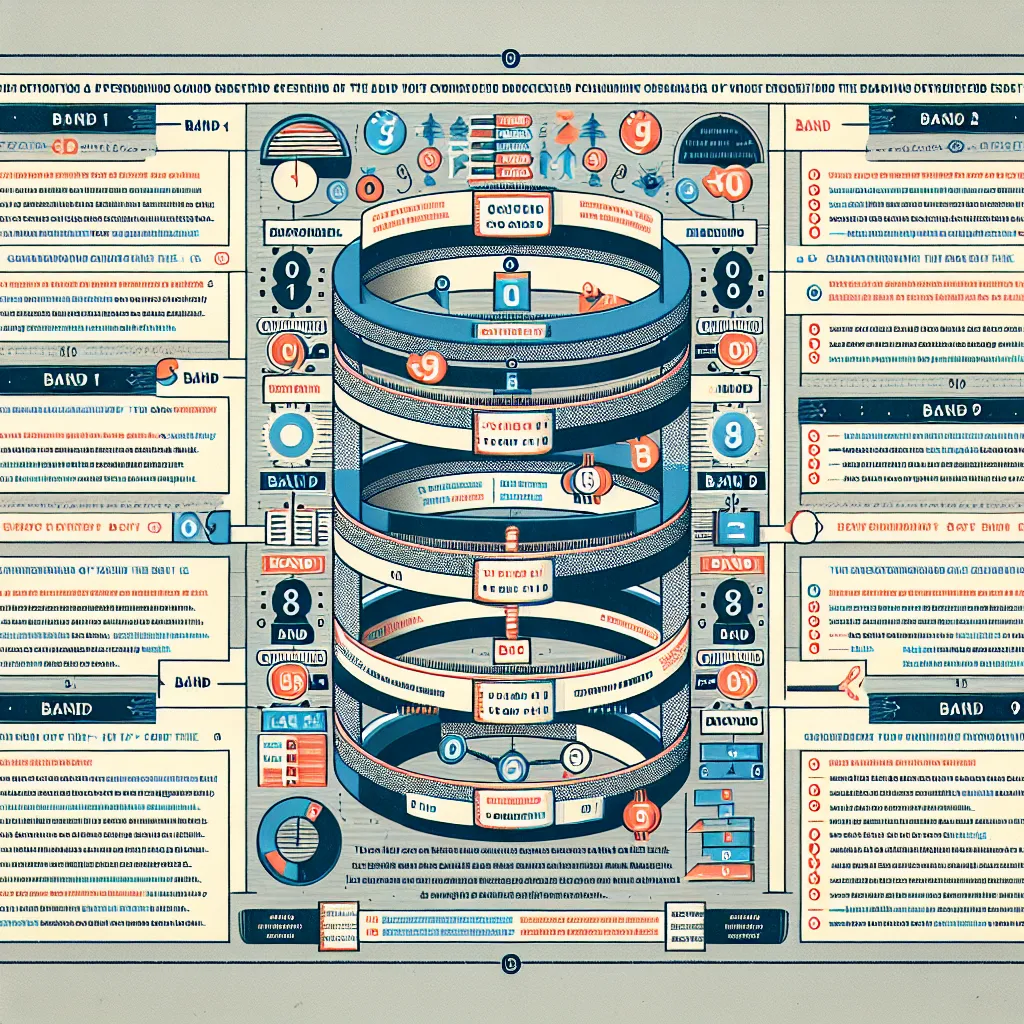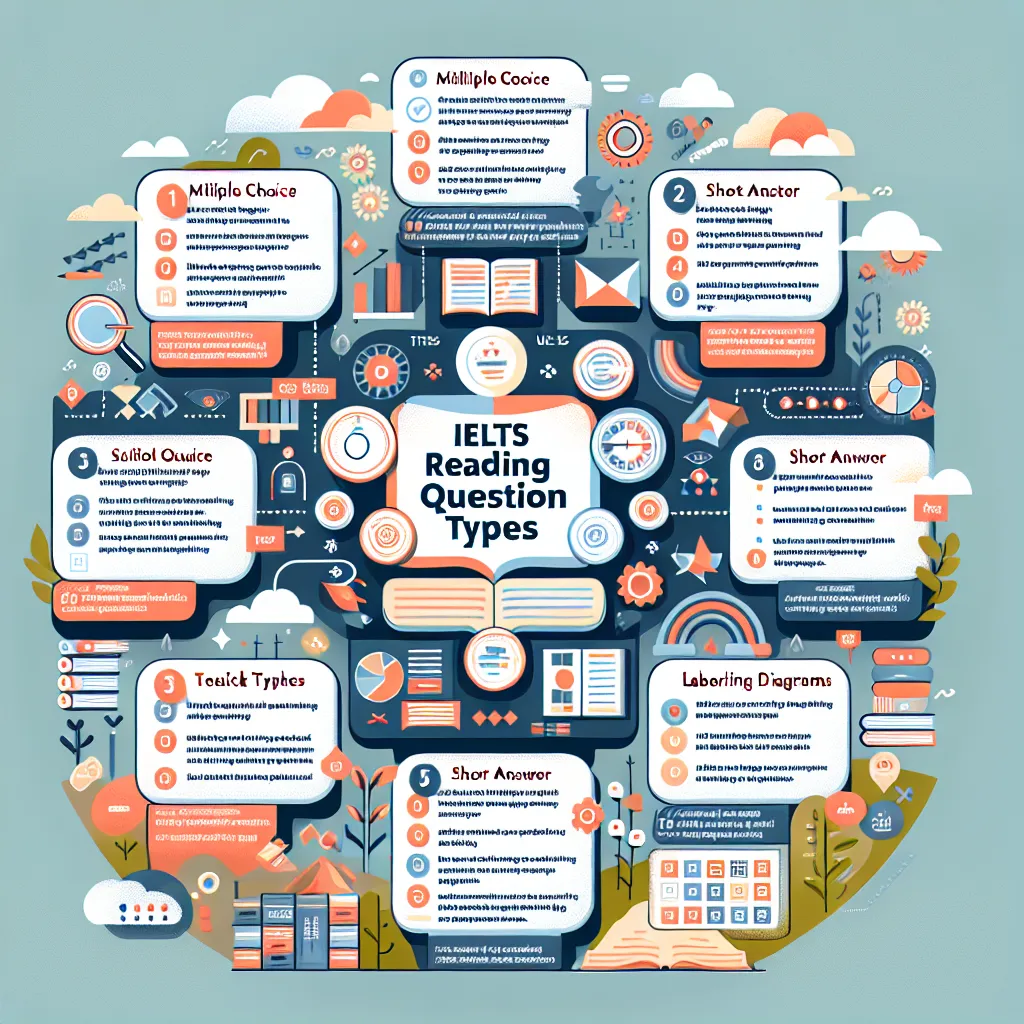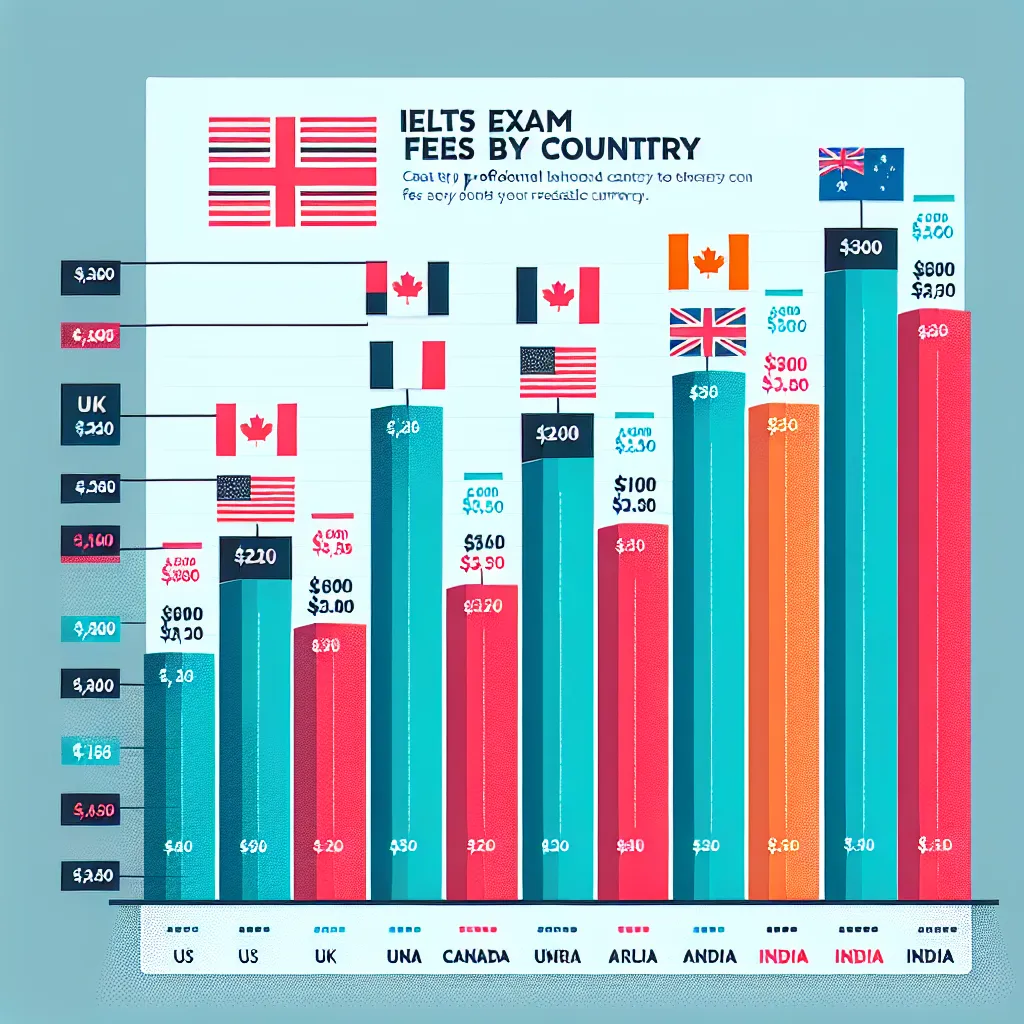Are you preparing for the IELTS Reading test and feeling overwhelmed by the scoring system? Understanding the IELTS Reading band descriptors is crucial for your success. In this comprehensive guide, we’ll break down the IELTS Reading band descriptors, helping you grasp what examiners are looking for and how to improve your score.
What Are IELTS Reading Band Descriptors?
IELTS Reading band descriptors are detailed explanations of the criteria used to assess a candidate’s performance in the IELTS Reading test. These descriptors provide a clear picture of what skills and abilities are expected at each band score, ranging from Band 1 (the lowest) to Band 9 (the highest).
Understanding these descriptors is essential for several reasons:
- It helps you set realistic goals for your IELTS preparation.
- You can identify your strengths and weaknesses more effectively.
- It allows you to focus your study efforts on areas that need improvement.
- You gain insight into how examiners evaluate your performance.
 IELTS Reading Band Descriptors Chart
IELTS Reading Band Descriptors Chart
Breaking Down the IELTS Reading Band Descriptors
Let’s explore the key components of the IELTS Reading band descriptors and what they mean for test-takers.
Comprehension Level
One of the primary factors assessed in the IELTS Reading test is your level of comprehension. Here’s how it’s evaluated across different band scores:
- Band 9: Demonstrates complete understanding of complex texts, including implicit meanings.
- Band 7-8: Shows good comprehension of most text types, including some complex passages.
- Band 5-6: Understands the main ideas but may struggle with more complex texts.
- Band 3-4: Limited understanding, often grasping only basic information.
- Band 1-2: Minimal or no understanding of written English.
To improve your comprehension, practice reading a wide variety of texts, from academic journals to newspaper articles. [internal_links]
Reading Speed and Fluency
The IELTS Reading test is timed, so your ability to read quickly while maintaining comprehension is crucial. Here’s how it’s reflected in the band descriptors:
- Band 9: Reads with exceptional speed and accuracy.
- Band 7-8: Demonstrates good reading speed with minimal re-reading required.
- Band 5-6: May read at a moderate pace but often needs to re-read for full understanding.
- Band 3-4: Slow reading speed, frequently re-reading passages.
- Band 1-2: Extremely slow, unable to process text effectively.
To improve your reading speed, try timed reading exercises and practice skimming and scanning techniques.
Vocabulary Range
Your ability to understand and interpret a wide range of vocabulary is another critical aspect of the IELTS Reading band descriptors:
- Band 9: Excellent command of extensive vocabulary, including idiomatic expressions.
- Band 7-8: Good vocabulary range, able to understand most words in context.
- Band 5-6: Adequate vocabulary for general topics, may struggle with specialized terms.
- Band 3-4: Limited vocabulary, often misunderstanding words.
- Band 1-2: Extremely limited vocabulary knowledge.
Expand your vocabulary by reading extensively and maintaining a vocabulary journal. [internal_links]
Ability to Handle Different Question Types
The IELTS Reading test includes various question types, and your proficiency in handling them is reflected in the band descriptors:
- Band 9: Expertly handles all question types with ease.
- Band 7-8: Competently answers most question types with few errors.
- Band 5-6: Can manage some question types but may struggle with others.
- Band 3-4: Difficulty with most question types, often guessing answers.
- Band 1-2: Unable to effectively answer most questions.
Practice with a variety of question types, including multiple choice, true/false/not given, and matching exercises.
 IELTS Reading Question Types
IELTS Reading Question Types
How to Improve Your IELTS Reading Band Score
Now that you understand the IELTS Reading band descriptors, here are some strategies to boost your performance:
-
Read extensively: Expose yourself to a wide range of texts, including academic articles, newspapers, and literature.
-
Practice timed reading: Simulate test conditions by setting time limits for your practice sessions.
-
Develop active reading skills: Learn to skim for main ideas and scan for specific information.
-
Build your vocabulary: Focus on academic word lists and subject-specific terminology.
-
Analyze your mistakes: Review incorrect answers in practice tests to understand your weaknesses.
-
Familiarize yourself with question types: Practice all IELTS Reading question formats regularly.
-
Improve your time management: Allocate your time wisely across different sections of the test.
-
Enhance your concentration: Practice reading for extended periods without distractions.
Common Pitfalls to Avoid
When aiming for a higher band score, be aware of these common mistakes:
- Spending too much time on difficult questions
- Neglecting to read instructions carefully
- Failing to transfer answers accurately to the answer sheet
- Mismanaging time and leaving questions unanswered
- Overlooking key words in questions or passages
By understanding these pitfalls and actively working to avoid them, you can significantly improve your IELTS Reading performance.
Next Steps in Your IELTS Reading Preparation
Now that you have a clear understanding of the IELTS Reading band descriptors, it’s time to put your knowledge into practice:
- Take a diagnostic test to determine your current band score.
- Set realistic goals based on your target score and timeframe.
- Create a study plan that addresses your weaknesses.
- Use high-quality IELTS preparation materials and practice tests.
- Consider joining a study group or seeking guidance from an IELTS instructor.
Remember, improving your IELTS Reading score takes time and consistent effort. Stay motivated, track your progress, and celebrate small victories along the way.
In conclusion, understanding the IELTS Reading band descriptors is a crucial step in your IELTS preparation journey. By familiarizing yourself with these criteria and implementing targeted strategies, you can significantly enhance your performance and achieve your desired band score. Keep practicing, stay focused, and approach your IELTS Reading test with confidence!




